wildflowers
If you take a stroll down our garden, in the cooler evening breeze, before the sun has set and is bright enough to illuminate everything for you, there will be something waiting there that makes life seem ok - however desperate you may feel. Hop over the garden fence, through the snicket, between the land where the squirrels play, and onto a field and a hill. These hills are man-made, the remnants of a previous age, part of this place's industrial heritage. So long they have been earthed-over, covered up, and left to go wild. In between each of these fields, separating them, are pine forests with a mix of cherry, beech, hawthorn, rowan and blackthorn.
In the heart of these woods live the wood spirits, they protect the forest and those who pass through it. If you carry on through the fields which are now knee-deep in long feathery grasses, you'll come across something magical. If you're lucky, there will be a little orchid peeping through amongst rambling cats-ear, ribwort plantain, sheep's fescue and daisies. If you did not know what it was, you might think it was nothing more than a wayside weed, unobtrusive is this little gem, but no! It's a wild, beautiful thing, as are all the wayside flowers.
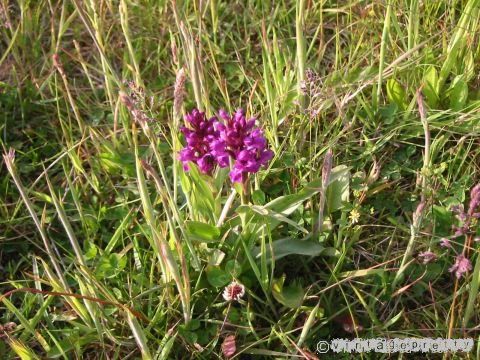

Our orchid is a pyramidal orchid, with deep magenta flowers and an apparent musky smell attracting moths at night. I can't attest to this attribute - I'm not that supple, but I will believe my book. It is all the more beautiful because it's there naturally. No one has bought it, planted it out there, cultivated it, it's there by nature alone, and that is perfection.
But I won't dwell soley on orchids; I've recently taken my knowledge regarding wildflowers up a notch, I can recognise hundreds of flowers thanks to dilligent reading, and have found lots on our little heathland itself. From cats-ear to silverweed, red clover to perennial rye grass the list is endless. Every plant on that heath competes with its neighbour, and manages to hold its own, the balance is kept perfectly.
Every day I go out I find something new, like these sloes, the fruit of the blackthorn 'prunus spinosa', will make gorgeous sloe gin if we get to some of them before the birds!
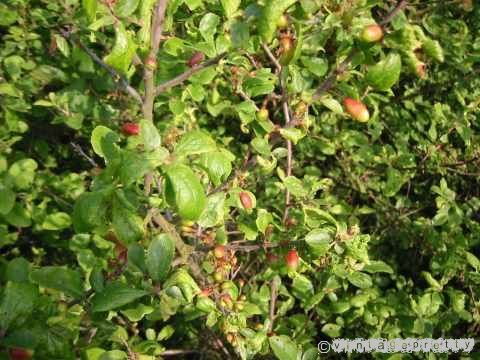
Or the tiny common vetch, a member of the pea family, its cerise flowers can be found in small drifts throughout the heath, usually neighbouring a buttercup.

The last push of the beautiful hawthorn, changing from the cleanest white, to cream, to a blush of pink before the petals fall to the floor. The fruit of which will be collected and eaten, served with pheasant, when the game season comes around. But for now I will enjoy their last few days of flower, and will be sad when they're gone.
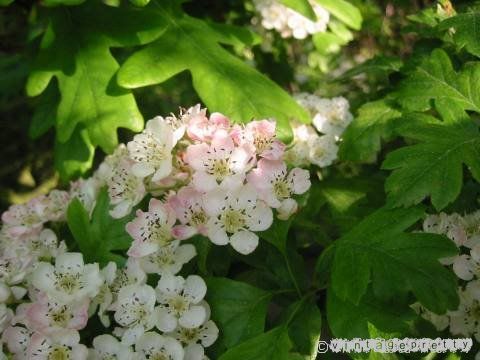
There are some plants that are harder to identify. Is this a hop trefoil, or is it a lesser trefoil? The only really noticeable difference is whether the petals are pinched or not, this I believe is a hop trefoil, but I'll get down on my hands and knees amongst the grass and have a look for myself.
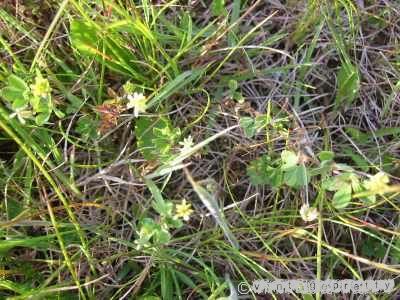
Then there are some which I can't seem to identify at all, it's not bindweed or nightshade - does anyone have any ideas? I thought it might be butterbur, but I'm not sure.
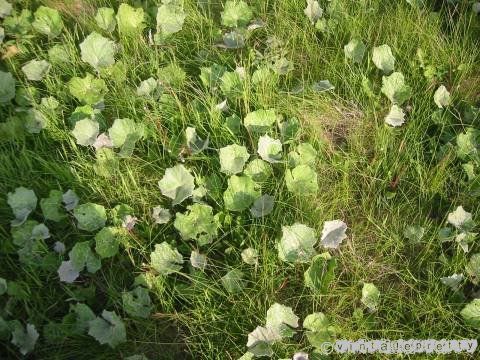
Nigella once said about food "if you can find so much pleasure in such small things, then your life is made alot easier", this is how I feel about nature. I get all of my pleasure from seeing the earth carry on, flowers growing, seasons changing, and living as close to nature as possible.
In the heart of these woods live the wood spirits, they protect the forest and those who pass through it. If you carry on through the fields which are now knee-deep in long feathery grasses, you'll come across something magical. If you're lucky, there will be a little orchid peeping through amongst rambling cats-ear, ribwort plantain, sheep's fescue and daisies. If you did not know what it was, you might think it was nothing more than a wayside weed, unobtrusive is this little gem, but no! It's a wild, beautiful thing, as are all the wayside flowers.


Our orchid is a pyramidal orchid, with deep magenta flowers and an apparent musky smell attracting moths at night. I can't attest to this attribute - I'm not that supple, but I will believe my book. It is all the more beautiful because it's there naturally. No one has bought it, planted it out there, cultivated it, it's there by nature alone, and that is perfection.
But I won't dwell soley on orchids; I've recently taken my knowledge regarding wildflowers up a notch, I can recognise hundreds of flowers thanks to dilligent reading, and have found lots on our little heathland itself. From cats-ear to silverweed, red clover to perennial rye grass the list is endless. Every plant on that heath competes with its neighbour, and manages to hold its own, the balance is kept perfectly.
Every day I go out I find something new, like these sloes, the fruit of the blackthorn 'prunus spinosa', will make gorgeous sloe gin if we get to some of them before the birds!

Or the tiny common vetch, a member of the pea family, its cerise flowers can be found in small drifts throughout the heath, usually neighbouring a buttercup.

The last push of the beautiful hawthorn, changing from the cleanest white, to cream, to a blush of pink before the petals fall to the floor. The fruit of which will be collected and eaten, served with pheasant, when the game season comes around. But for now I will enjoy their last few days of flower, and will be sad when they're gone.

There are some plants that are harder to identify. Is this a hop trefoil, or is it a lesser trefoil? The only really noticeable difference is whether the petals are pinched or not, this I believe is a hop trefoil, but I'll get down on my hands and knees amongst the grass and have a look for myself.

Then there are some which I can't seem to identify at all, it's not bindweed or nightshade - does anyone have any ideas? I thought it might be butterbur, but I'm not sure.

Nigella once said about food "if you can find so much pleasure in such small things, then your life is made alot easier", this is how I feel about nature. I get all of my pleasure from seeing the earth carry on, flowers growing, seasons changing, and living as close to nature as possible.

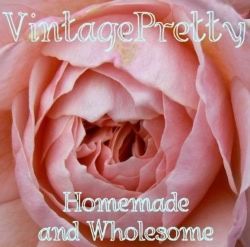
















3 Comments:
It just seems that at the moment Wood Spirits and Nature Spirits are popping up everywhere, my last post showed photos of one of my magical places and naturegirl in Canada's blog, Nature Trail, is often posting photos of magical places. Your unknown flower, that you think is butterbur, what sort of ground is it growing on dry or boggy?
I sat in the garden last night until ten just sniffing the air and watching my flowers, guessing which poppy would be the next to open, there is something about doing this quiet reflective thing that, for a while, makes everytning perfect.
Glad to see someone else who hangs clothes out in the fresh air, and doesnot just push them in a drier. I will be trying your soap powder receipe when I gather the ingredients together.
Oh sloe gin- do, do do! I make some every year, and now I have branched out into Blackberry Brandy which may even rival it...
If you are going to have a go at sloe gin, try to leave them on the bush as long as you can, until the first frost has been. If, however the birds are threatening to leave you sloe-less before this, you can pick some when they are that delightful dusky purple, and freeze them to simulate the frost.
Uplifting thoughts and photo's, as ever.
Can you get a better picture of the mystery plants? You will soon know if it is butterbur by the size of the leaves. They used to wrap butter in it and they grow to about 3 feet wide.
Nigella has gone up in my estimation now for saying that. It would be better if people took a closer look at what's around them rather than insisting on driving or (worse) flying all over the place in search of something to satisfy them. Mind you, I did drive to Wales which makes me something of a hypocrite.
Good luck with the sloe gin. It's worth making presentation bottles for Christmas presents. A friend of mine uses vodka instead. I've not tried that, but it sounds good.
Post a Comment
<< Home